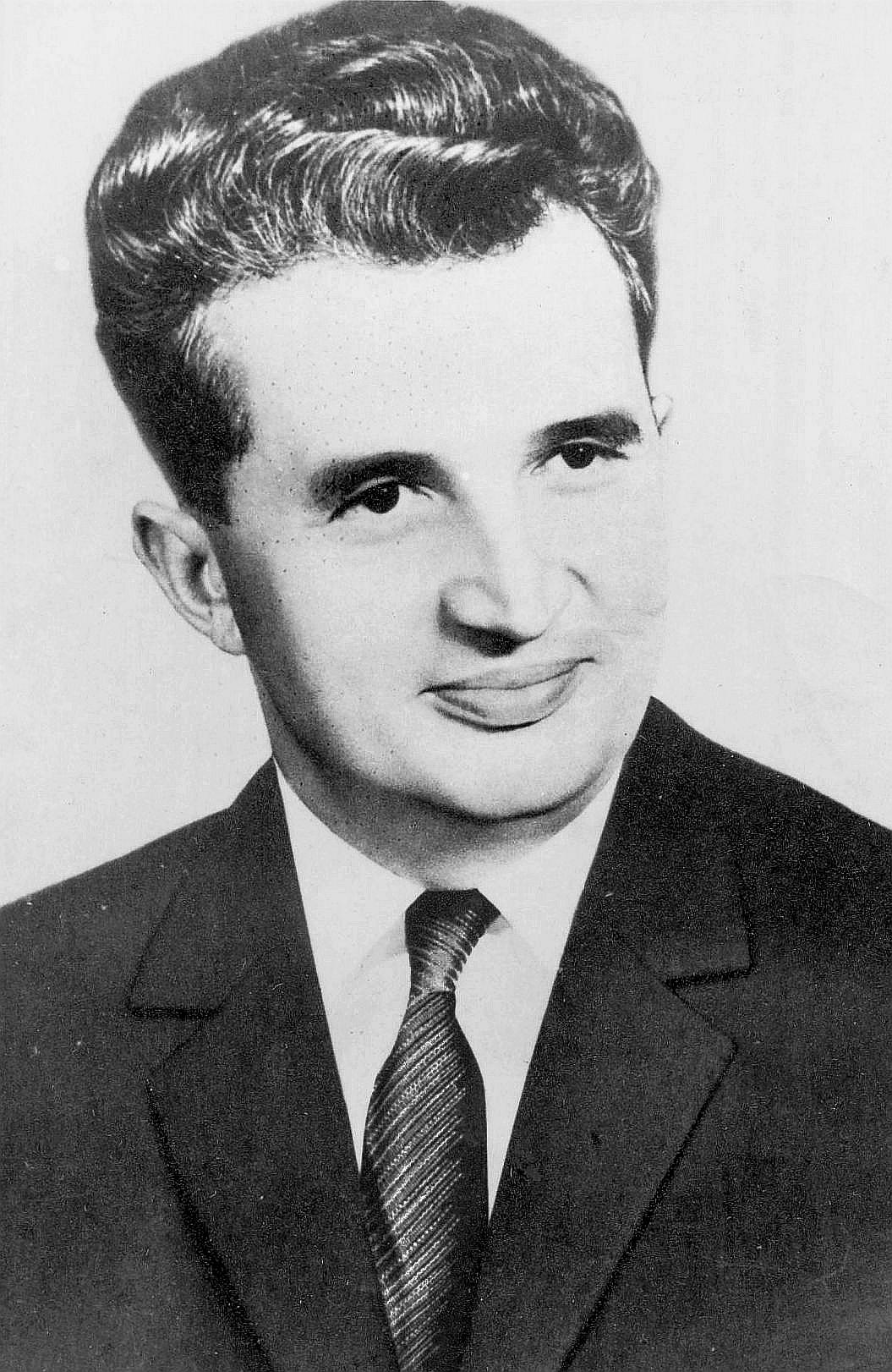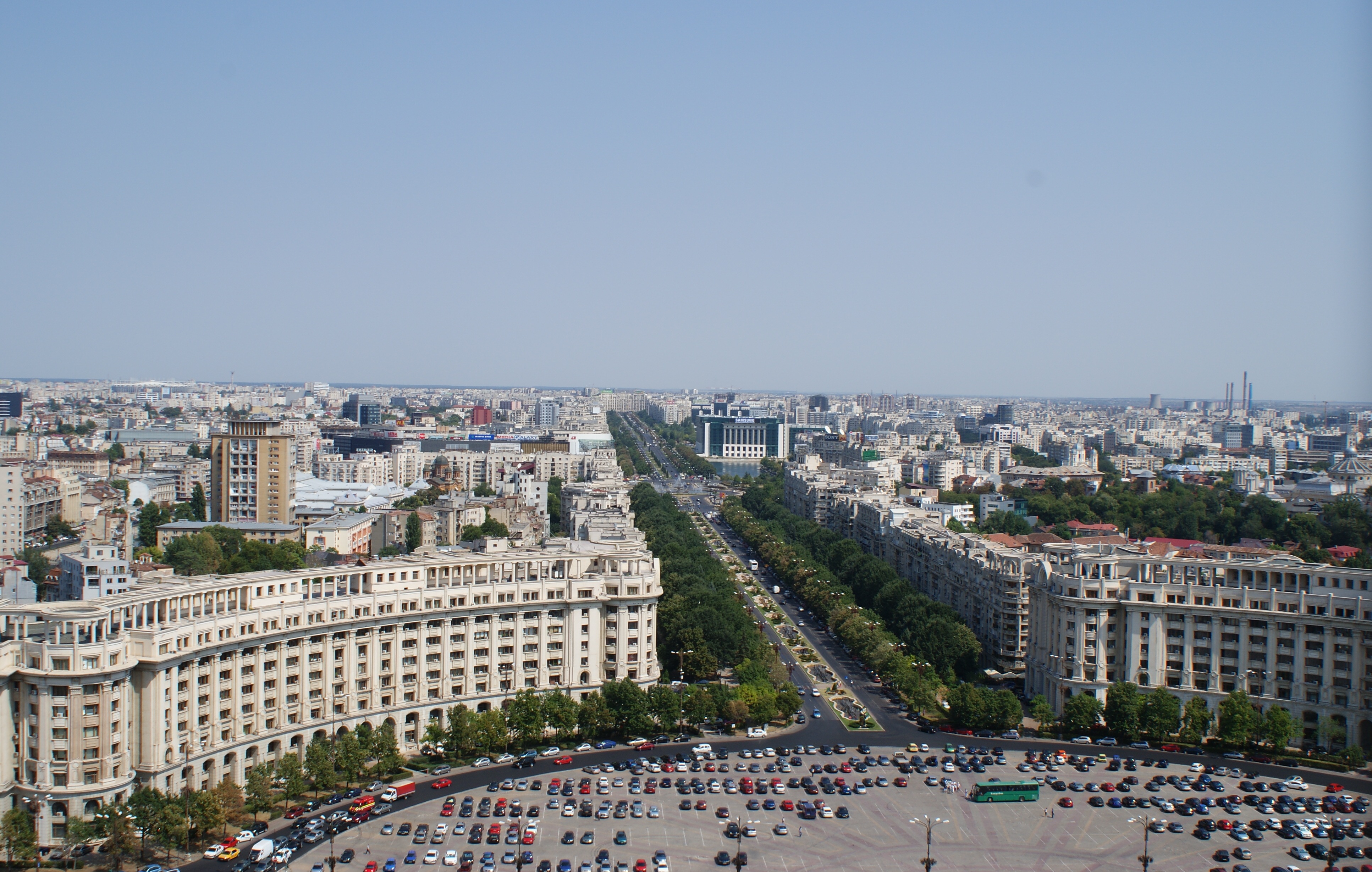|
Bulevardul Unirii
Bulevardul Unirii (, ''Union Boulevard'') is a major thoroughfare in central Bucharest, Romania. It connects Constitution Square (Pia╚Ťa Constitu╚Ťiei) with Alba Iulia Square (Pia╚Ťa Alba Iulia), and also runs through Union Square (Pia╚Ťa Unirii). The Constitution Square end features the Palace of the Parliament, which began construction simultaneously with the boulevard as an architectural unit. History Following the 1977 Vrancea earthquake, Bucharest's city center suffered significant damage, and a large number of historic buildings were demolished to make way for the new Centrul Civic (''Civic Center''). As part of the project, ''Bulevardul Unirii'' was to be Communist Romania's answer to Paris's ''Avenue des Champs-├ëlys├ęes''. Construction began on June 25, 1984. Initially called ''Bulevardul Victoria Socialismului'' (''Victory of Socialism Boulevard''), the road is lined with apartment blocks and various public buildings of socialist-realism inspiration. Transport The bo ... [...More Info...] [...Related Items...] OR: [Wikipedia] [Google] [Baidu] |
Palace Of The Parliament
The Palace of the Parliament ( ro, Palatul Parlamentului), also known as the Republic's House () or People's House/People's Palace (), is the seat of the Parliament of Romania, located atop Dealul Spirii in Bucharest, the national capital. The Palace reaches a height of , has a floor area of and a volume of . The Palace of the Parliament is the heaviest building in the world, weighing about , also being the second largest administrative building in the world. (The Great Pyramid of Giza is about 50% heavier.) The building was designed and supervised by chief architect Anca Petrescu, with a team of approximately 700 architects, and constructed over a period of 13 years (1984–97) in Socialist realism, Socialist realist and modernist Neoclassical architecture, Neoclassical architectural forms and styles, with socialist realism in mind. The Palace was ordered by Nicolae Ceau╚Öescu (1918–1989), the President (government title), president of Communist Romania and the second ... [...More Info...] [...Related Items...] OR: [Wikipedia] [Google] [Baidu] |
Pia╚Ťa Unirii Metro Station
Pia╚Ťa Unirii (''Union Square'') is a major metro station in Bucharest. It is located in the southern part of the city centre, in Union Square (''Pia╚Ťa Unirii'' in Romanian), and it is one of the busiest stations of the Bucharest Metro. It is made up of two terminals, one on the M1 and M3 lines and another on the M2 line, linked by a passage. The M1/M3 station was opened on 19 November 1979 as part of the inaugural section of Bucharest Metro, between Sem─ân─âtoarea and Timpuri Noi. The M2 station was opened on 24 January 1986 as part of the inaugural section of the line, from Pia╚Ťa Unirii to Depoul IMGB. On 24 October 1987, the line was extended north to Pipera. A McDonald's fast-food restaurant is located in the vestibule above the M2 line platform. The station also features kiosks selling from newspapers to stationery, bakeries, a diversity of shops, public phones, a large transport police station (with a list of mugshots at the entrance) and mobile-phone servicing point ... [...More Info...] [...Related Items...] OR: [Wikipedia] [Google] [Baidu] |
Pia╚Ťa Constitu╚Ťiei
Pia╚Ťa Constitu╚Ťiei (Romanian for "Constitution Square") is one of the largest squares in the centre of Bucharest, Romania. The square is standing face-to-face with the Palace of the Parliament (biggest building in Europe) and it is bisected by Bulevardul Unirii (''Union Boulevard'') and by Bulevardul Libert─â╚Ťii (''Liberty Boulevard''). The square is one of the best places to organize concerts and parades of Bucharest. Every year, the mayor of Bucharest organizes the New Year New Year is the time or day currently at which a new calendar year begins and the calendar's year count increments by one. Many cultures celebrate the event in some manner. In the Gregorian calendar, the most widely used calendar system to ...'s Party in this square. The square is also used to host military parades in honor of the National Day of Romania. Concerts References {{DEFAULTSORT:Piata Constitutiei Squares in Bucharest National squares Music venues in Romania ... [...More Info...] [...Related Items...] OR: [Wikipedia] [Google] [Baidu] |
Thoroughfare
A thoroughfare is a primary passage or way as a transit route through regularly trafficked areas, whether by road on dry land or, by extension, via watercraft or aircraft. On land, a thoroughfare may refer to anything from a multi-lane highway with grade-separated junctions to a rough trail. Thoroughfares are used by a variety of traffic, such as cars, as well as pedestrians on roads and highways. On water, a thoroughfare may refer to a strait, channel, or waterway. The term may also refer to access to a route, distinct from the route itself. Thus, ''thoroughfare'' may refer to the legal right to use a particular way. Different terms *Highways, public or private road or other public way on land *Roads, route or way on land between two places that has been paved or otherwise improved for travel *Bridle path, for equestrian use *Cycleway, for use by cyclists *Footpath, for use only by pedestrians *Foreshoreway, a greenway along the edge of the sea, open to both walkers and cycli ... [...More Info...] [...Related Items...] OR: [Wikipedia] [Google] [Baidu] |
Bucharest
Bucharest ( , ; ro, Bucure╚Öti ) is the capital and largest city of Romania, as well as its cultural, industrial, and financial centre. It is located in the southeast of the country, on the banks of the D├ómbovi╚Ťa River, less than north of the Danube River and the Bulgarian border. Bucharest was first mentioned in documents in 1459. The city became the capital of Romania in 1862 and is the centre of Romanian media, culture, and art. Its architecture is a mix of historical (mostly Eclectic, but also Neoclassical and Art Nouveau), interbellum ( Bauhaus, Art Deco and Romanian Revival architecture), socialist era, and modern. In the period between the two World Wars, the city's elegant architecture and the sophistication of its elite earned Bucharest the nickname of 'Paris of the East' ( ro, Parisul Estului) or 'Little Paris' ( ro, Micul Paris). Although buildings and districts in the historic city centre were heavily damaged or destroyed by war, earthquakes, and even Nic ... [...More Info...] [...Related Items...] OR: [Wikipedia] [Google] [Baidu] |
Romania
Romania ( ; ro, Rom├ónia ) is a country located at the crossroads of Central Europe, Central, Eastern Europe, Eastern, and Southeast Europe, Southeastern Europe. It borders Bulgaria to the south, Ukraine to the north, Hungary to the west, Serbia to the southwest, Moldova to the east, and the Black Sea to the southeast. It has a predominantly Temperate climate, temperate-continental climate, and an area of , with a population of around 19 million. Romania is the List of European countries by area, twelfth-largest country in Europe and the List of European Union member states by population, sixth-most populous member state of the European Union. Its capital and largest city is Bucharest, followed by Ia╚Öi, Cluj-Napoca, Timi╚Öoara, Constan╚Ťa, Craiova, Bra╚Öov, and Gala╚Ťi. The Danube, Europe's second-longest river, rises in Germany's Black Forest and flows in a southeasterly direction for , before emptying into Romania's Danube Delta. The Carpathian Mountains, which cross Roma ... [...More Info...] [...Related Items...] OR: [Wikipedia] [Google] [Baidu] |
1977 Vrancea Earthquake
The 1977 Vrancea earthquake occurred on 4 March 1977, at 21:22 local time, and was felt throughout the Balkans. It had a magnitude of 7.5, making it the second most powerful earthquake recorded in Romania in the 20th century, after the 10 November 1940 seismic event. The hypocenter was situated in the Vrancea Mountains, the most seismically active part of Romania, at a depth of 85.3 km. The earthquake killed about 1,578 people (1,424 in Bucharest) in Romania, and wounded more than 11,300. Among the victims were actor Toma Caragiu and writers A. E. Bakonsky, Alexandru Ivasiuc and Corneliu M. Popescu. Communist ruler Nicolae Ceaușescu suspended his official visit to Nigeria and declared a state of emergency. About 32,900 buildings were damaged or destroyed. Immediately after the earthquake, 35,000 families were without shelter. The economic losses are believed to have been as high as two billion US dollars though the sum was not confirmed by the authorities at that time. A ... [...More Info...] [...Related Items...] OR: [Wikipedia] [Google] [Baidu] |
Centrul Civic
Centrul Civic (, ''the Civic Centre'') is a district in central Bucharest, Romania, which was completely rebuilt in the 1980s as part of the scheme of systematization under the dictator Nicolae Ceaușescu, which included the construction of new civic centres in the Romanian cities. Bucharest Civic Centre was planned to become the new political-administrative center of Communist Romania. History Bucharest suffered significant damage due to Allied bombing during World War II and the devastating earthquake of March 4, 1977. However, neither of these events changed the face of the city more than the Ceaușescan "redevelopment schemes" of the 1980s, under which an overall area of of the historic center of Bucharest was affected, including monasteries, churches, synagogues, a hospital, and a noted Art Deco sports stadium ( Stadionul Republicii). This also involved evicting 40,000 people after a single day's notice and relocating them to new homes, in order to make way for the grand ... [...More Info...] [...Related Items...] OR: [Wikipedia] [Google] [Baidu] |
Communist Romania
The Socialist Republic of Romania ( ro, Republica Socialist─â Rom├ónia, RSR) was a MarxismÔÇôLeninism, MarxistÔÇôLeninist One-party state, one-party socialist state that existed officially in Romania from 1947 to 1989. From 1947 to 1965, the state was known as the Romanian People's Republic (, RPR). The country was an Eastern Bloc state and a member of the Warsaw Pact with a dominant role for the Romanian Communist Party enshrined in :Template:RomanianConstitutions, its constitutions. Geographically, RSR was bordered by the Black Sea to the east, the Soviet Union (via the Ukrainian Soviet Socialist Republic, Ukrainian and Moldavian Soviet Socialist Republic, Moldavian SSRs) to the north and east, Hungarian People's Republic, Hungary and Socialist Federal Republic of Yugoslavia, Yugoslavia (via Socialist Republic of Serbia, SR Serbia) to the west, and People's Republic of Bulgaria, Bulgaria to the south. As World War II ended, Kingdom of Romania, Romania, a former Axis powers, A ... [...More Info...] [...Related Items...] OR: [Wikipedia] [Google] [Baidu] |
Paris
Paris () is the capital and most populous city of France, with an estimated population of 2,165,423 residents in 2019 in an area of more than 105 km┬▓ (41 sq mi), making it the 30th most densely populated city in the world in 2020. Since the 17th century, Paris has been one of the world's major centres of finance, diplomacy, commerce, fashion, gastronomy, and science. For its leading role in the arts and sciences, as well as its very early system of street lighting, in the 19th century it became known as "the City of Light". Like London, prior to the Second World War, it was also sometimes called the capital of the world. The City of Paris is the centre of the ├Äle-de-France region, or Paris Region, with an estimated population of 12,262,544 in 2019, or about 19% of the population of France, making the region France's primate city. The Paris Region had a GDP of ÔéČ739 billion ($743 billion) in 2019, which is the highest in Europe. According to the Economist Intelli ... [...More Info...] [...Related Items...] OR: [Wikipedia] [Google] [Baidu] |



